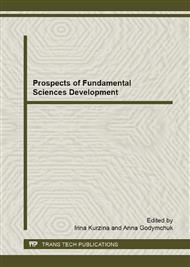p.79
p.84
p.91
p.95
p.101
p.107
p.113
p.119
p.124
Sorption Selectivity of Rare-Earth Elements Ions by KB-2E Macroreticular Carboxylic Cation Exchanger
Abstract:
Sorption selectivity of a number of REE ions (Pr3+, Nd3+, Sm3+, Yb3+) was studied with the help of the KB-2E macroreticular carboxylic cation exchanger with a different content of a crosslinking agent. Selectivity was weakly dependent on the degree of crosslinking of the cation exchanger and concentration of the sorbed metal ion, which could be explained by the macroreticular structure of the cation exchanger. An increase in sorption selectivity of heavier REEs (Yb3+) correlated with a decrease in their crystallographic radius. It was concluded that a coordinate link of REE ions and oxygen donor atoms - a part of the cation exchanger - had been formed.
Info:
Periodical:
Pages:
101-106
Citation:
Online since:
February 2015
Authors:
Price:
Сopyright:
© 2015 Trans Tech Publications Ltd. All Rights Reserved
Share:
Citation:


